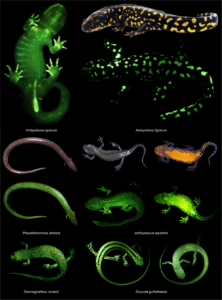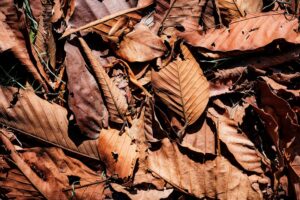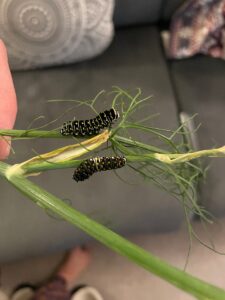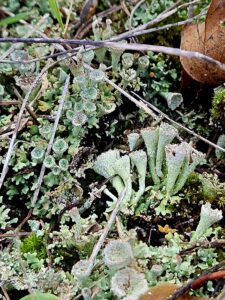 By Kennedy Zittel, Naturalist
By Kennedy Zittel, Naturalist
Taking a walk through a prairie often feels magical, doesn’t it? In the summer months, flowers of a variety of colors, shapes, and textures carpet the prairie landscape. Fuzzy bumble bees buzz flower to flower. Colorful butterflies float on by while dragonflies and damselflies zip overhead. Green sedges and grasses sway in the breeze. Red-tailed hawks soar. All of that color and movement make the prairie feel so alive and magical.
Now that it is November, some may think that the prairie magic has faded away, lost with the sleeping flowers and disappearance of warm-month pollinators. The prairie, once oh so colorful, is now shades of brown and orange, with a dotting of reddish-purple from sedges and grasses that remain.
If you’d stop and take a closer look, you’d find that the magic is still there, waiting to be appreciated like it is during those warmer months.
While standing out in the prairie, milkweed seeds float on by, waiting to see where the wind will take them. Paths of deer zigzag through the grasses. Red fox tracks in the sand show that they are around, with their fur camouflaging perfectly with the colors of old flower stalks. The remaining leaves on surrounding trees, shades of red, purple, and orange fall to the ground every time the breeze picks up, like nature’s confetti.
Taking a close look at the ground reveals another magical sight. A carpet of soft green moss creeps out from beneath a little blue-stem plant, leading the way to what looks like a tiny dining area… just the right size for fairies! Pale green goblet-shaped cups emerge from the ground. Some are empty, others contain a tiny drop of dew, glittering in the November sunlight.
Pixie cup lichen (Cladonia sp.), are small fruticose lichen that look like tiny green cups (hence the name). In addition to growing in soil like in the prairie, they can grow on rotting wood, rocks, and bark in both partial shade to full sun. They look like something out of a children’s movie, waiting for a fairy to come and take a drink from one.
Surrounding the pixie cup lichen are even more lichen species, of all sorts of colors, textures, and shapes. Different types of moss cover the ground as well. Some are shaped like little pillows, perfect for a fairy nap. Others form little blankets that dot the sandy ground with a pop of dark green.
A loud call brings my attention towards a blue cloudless sky, five sandhill cranes fly overhead, calling to one another. Though I could stare at the magical world of a prairie all day, I do have to get back to work. Picking up a bag of wildflower seeds I begin tossing seeds around the prairie, some falling to the sandy soil, others floating to new areas in the breeze. The hope is that we can help add to the magic, for future people to enjoy as well as for the plants and animals that call the prairie home.
Photo by Kennedy Zittel
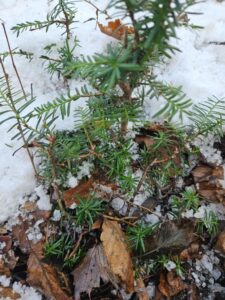 The small and unnoticed play a large role in the functions of nature. I realize that is a theme we teach over and over, but it is a fact of which we naturalists are constantly reminded. Majestic large trees and animals are wonderful to see, but they could not exist without the help of their smaller counterparts which keep the whole world running. At Woodland Dunes, we strive to keep all of nature’s pieces intact, like those in an impossibly large jigsaw puzzle. Sometimes we lose a piece and it causes us a lot of concern. In the early days of this place, extensive surveys were done, recording as many plant and animal species as could be identified. We now compare what we see to what was seen 50 years ago. Sometimes it’s a bit depressing to do so- species that were once regularly found then haven’t been seen for years. And once in a while, we find a plant or animal that has been here but hasn’t been detected.
The small and unnoticed play a large role in the functions of nature. I realize that is a theme we teach over and over, but it is a fact of which we naturalists are constantly reminded. Majestic large trees and animals are wonderful to see, but they could not exist without the help of their smaller counterparts which keep the whole world running. At Woodland Dunes, we strive to keep all of nature’s pieces intact, like those in an impossibly large jigsaw puzzle. Sometimes we lose a piece and it causes us a lot of concern. In the early days of this place, extensive surveys were done, recording as many plant and animal species as could be identified. We now compare what we see to what was seen 50 years ago. Sometimes it’s a bit depressing to do so- species that were once regularly found then haven’t been seen for years. And once in a while, we find a plant or animal that has been here but hasn’t been detected.

